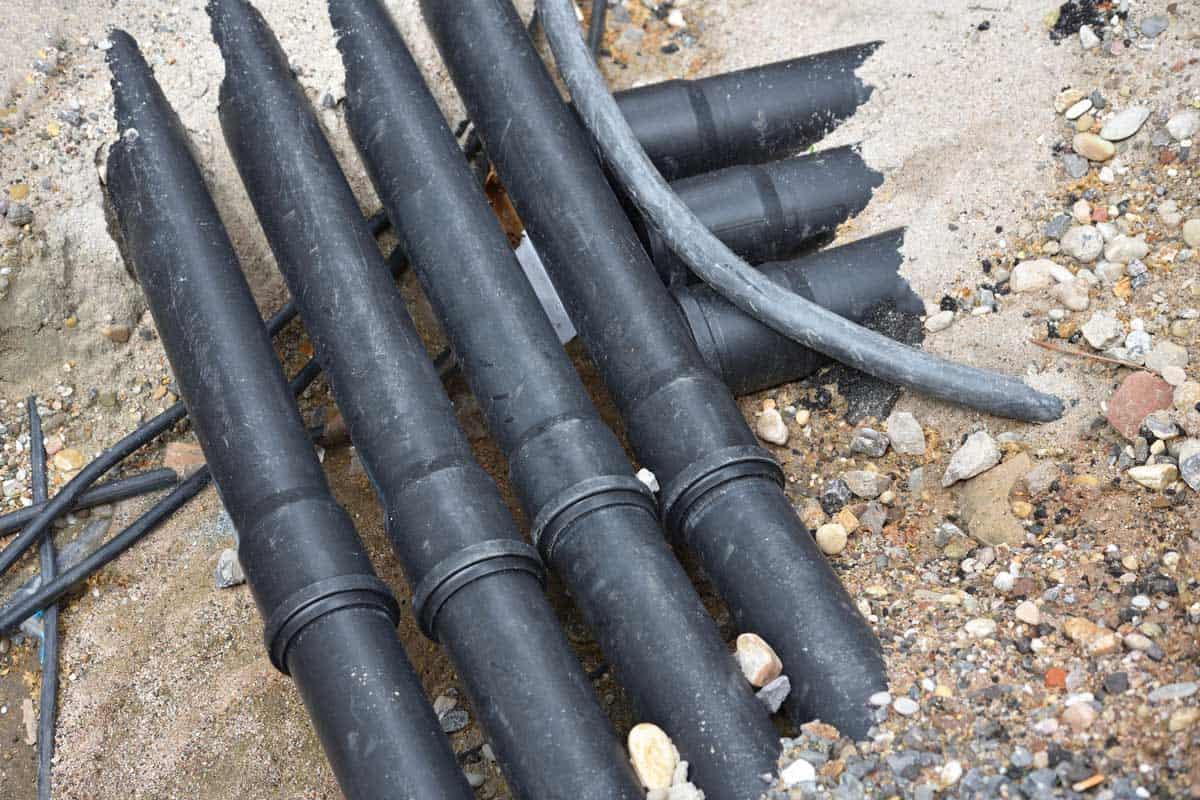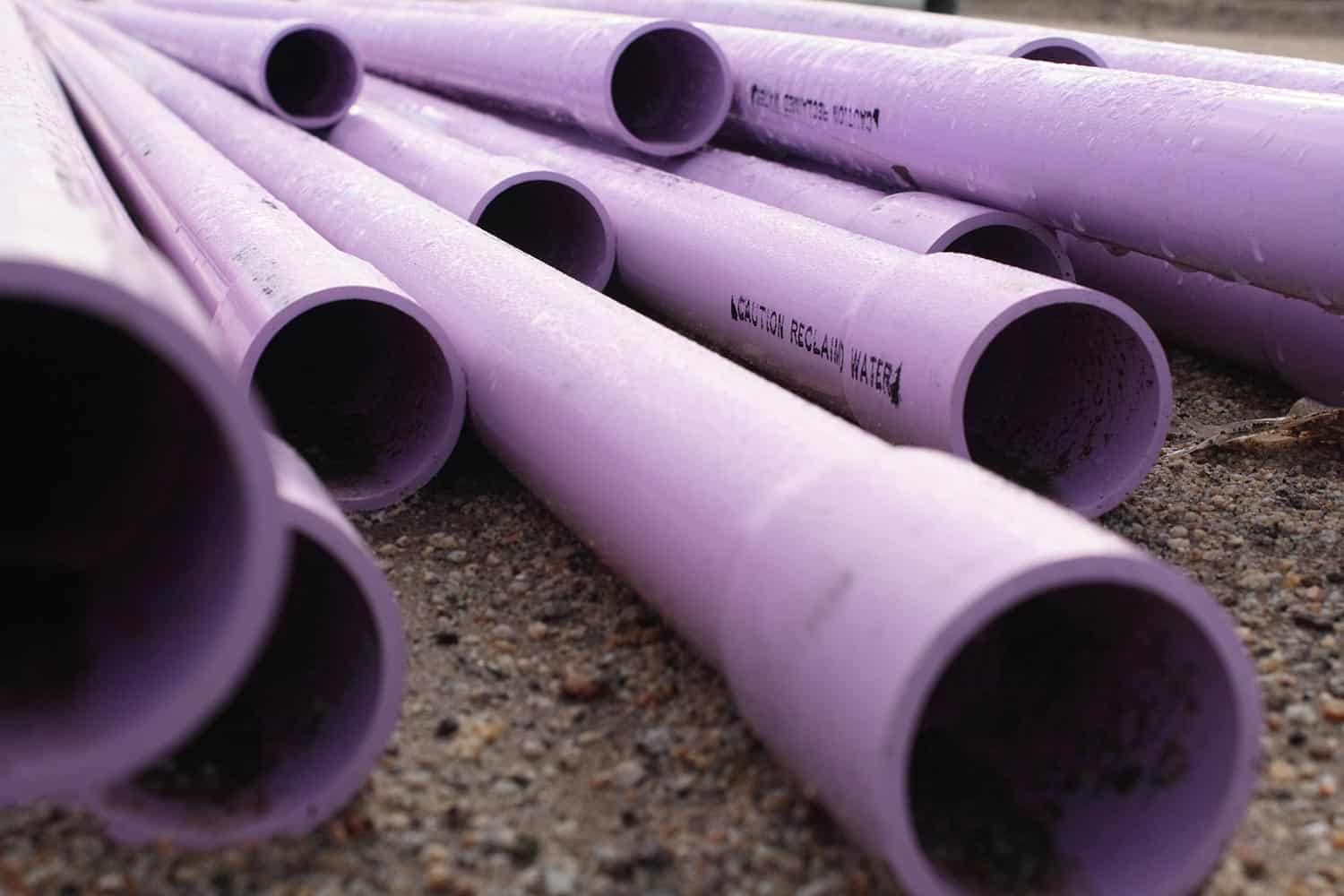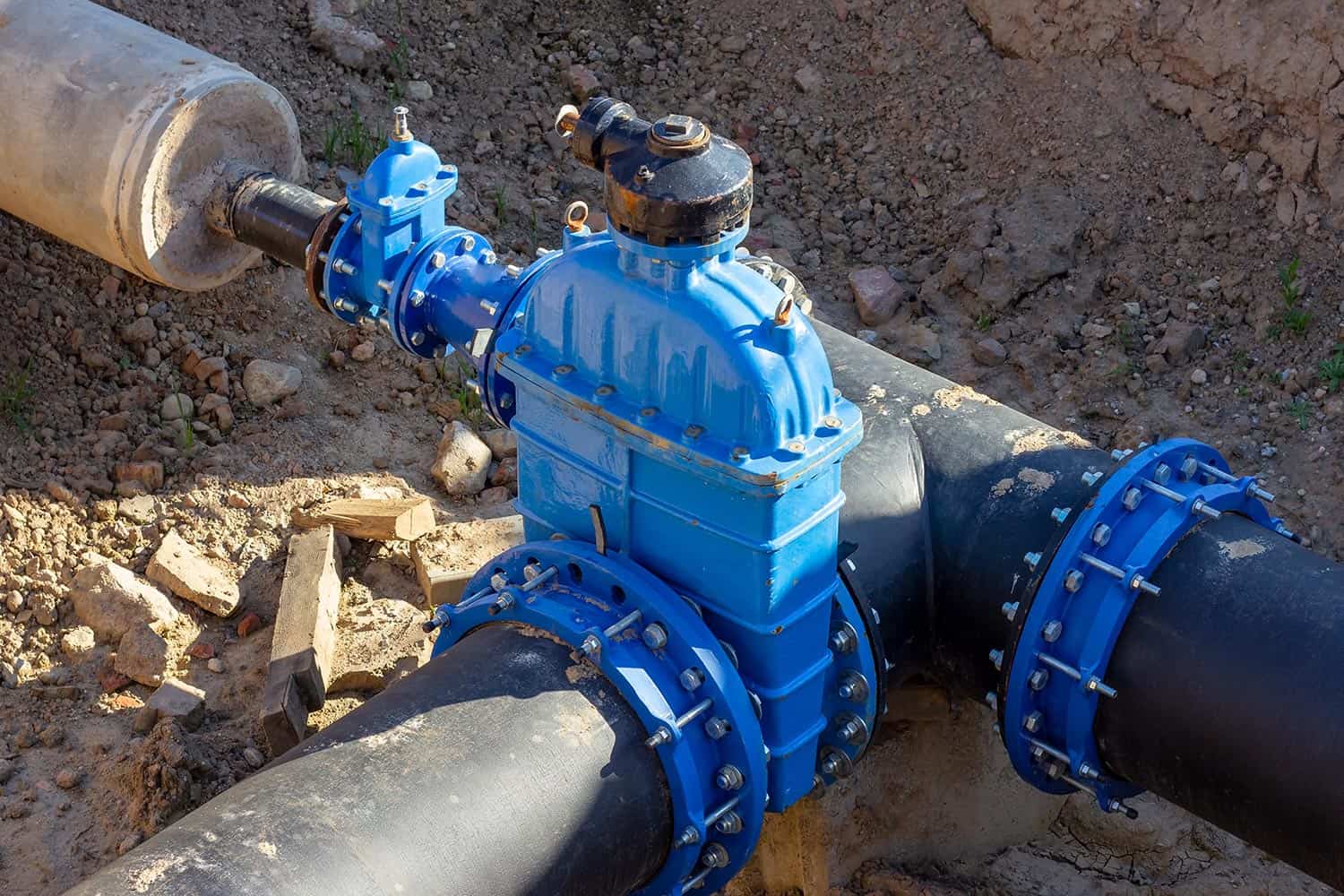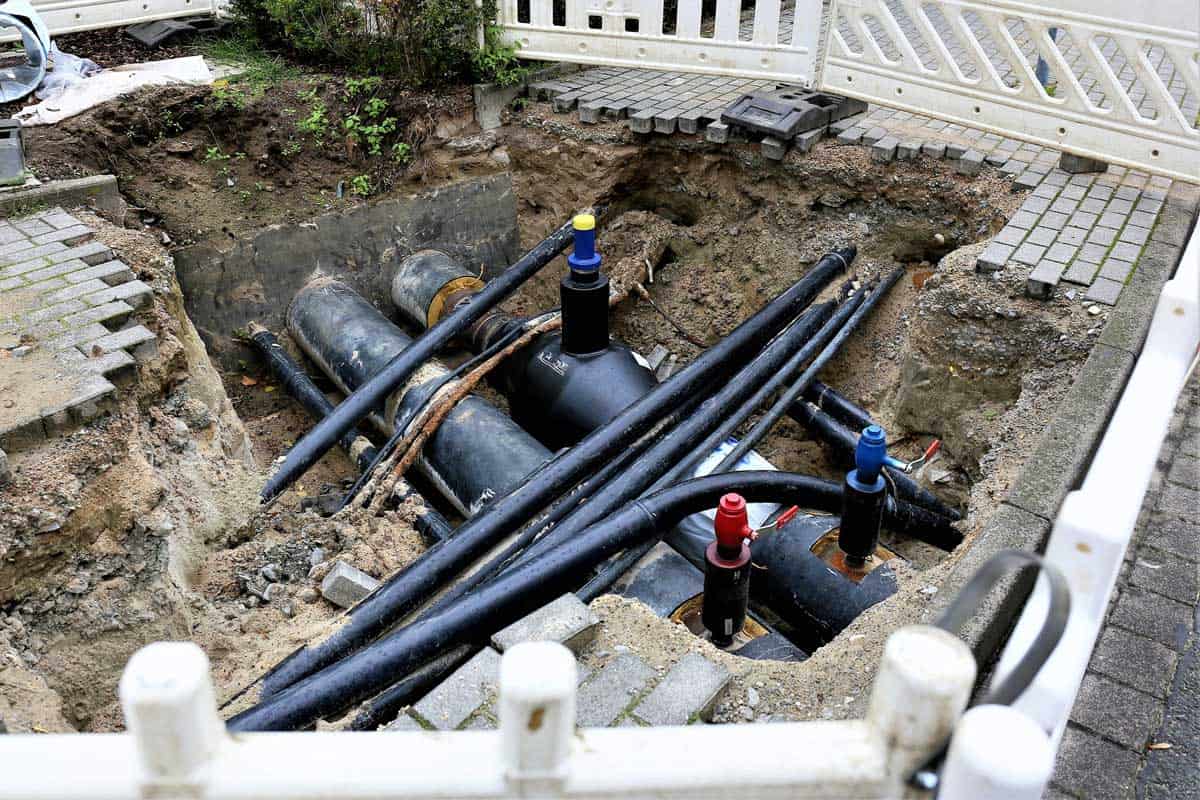Water lines are essential in assuring you have adequate water in your home. But maybe you want to run water to a shed, garden area, or barn. Maybe you're building your own home and need to put in your own line. Whatever your reason may be, you should know what the best pipe is to use when running an underground water line. We have done the research and came up with the answers you need.
Although there are many options for underground water pipes, HDPE pipes and PEX pipes are generally the best choices for an underground water line. These durable pipes are resistant to corrosion and rusting, ideal for running an underground water line.
Proper piping is essential in making sure your home and property receives water from a well or a city connection. Read below to find out why HDPE and PEX pipes are generally the best choice. We'll also discuss how deep your lines should be, what size should be used, and how to insulate your pipes in colder climates.

The Most Common Pipes For An Underground Water Line
There are many options for underground water pipes, and each have their own advantages and drawbacks. Overall, HDPE and PEX pipes are the best choice. But let's explore all the top choices and see why HDPE and PEX pipes are the best options for underground water lines.

HDPE Pipes
HDPE (High Density Polyethylene) pipes are a considered the best choice for underground water lines. What makes this type of piping so great? HDPE pipes are non-toxic, tasteless, and considered a green building material. The pipes are designed to be high crack- and corrosion-resistant. The pipes' light weight and flexibility contribute to an easy installation. With a long service life of 70 years and a low cost, this pipe is a highly desirable choice.
PEX Pipes
Cross-linked polyethylene, commonly called PEX pipes, are another great choice for an underground water line. The pipes are created from melted HDPE polymers, which gives the pipe a great amount of flexibility compared to other pipes. PEX pipes are durable, flexible, and able to handle high pressures. These pipes are a great option for yards that have obstacles to move around when digging and laying the pipe, as the pipe will not need fittings or elbows. On the downside, the lifespan of PEX pipes is usually between 30-50 years and even less if the water contains chlorine.
Check out these PEX pipes on Amazon.
Copper Pipes

A popular choice for underground plumbing, copper is resistant to leaks and rusting. But this sturdy metal pipe is sensitive to soils with a lower pH or high amounts of Sulphur. These conditions can cause the pipe to deteriorate faster than normal. Another drawback to copper piping is its inability to flex. If you need to curve your piping around a rock or wall, more pipe elbows will need to be used. Lastly, copper is notoriously expensive, making this option impractical for anyone on a budget.
PVC Pipes

PVC pipes are a common pipe choice for a lot of home projects. PVC is cheap and resistant to corrosion and rusting. And although PVC is sturdy, it is not flexible. This means more fittings and elbows when installing your underground water line. Additionally, some states and counties do not permit the use of PVC for underground water lines. Always check with your municipality or contractor on what you can use. If there are no laws against it, PVC is an affordable choice.
How Deep Should You Bury Water Lines?

The answer is going to vary depending on what state you live in. Even at that, different counties and cities of the same state may have different requirements. Always check with your municipality's building codes for an absolute answer.
Generally speaking, water lines should always be placed below the frost line. This ensures that the water line will not freeze. In "mid-range" states, such as Maryland, the general depth is 36 inches. Make sure to call 811 before you dig. 811 is the national "call before you dig" hotline. They will help you identify where, if any, utility lines are currently buried on the property.
What Size Pipe Is Used For Water Lines?
This is another question where the answer may vary depending on where you live. But, across many states, the usual size for the main water line flowing to the house is a 3/4-inch pipe. A 1-inch pipe would be even better for your main water supply line. The larger the pipe, the higher the water volume you will have flowing to the house. If you're running lines for your sprinkler system, the pipes do not need to be so big.
Does Decreasing Pipe Size Increase Water Pressure?
Decreasing pipe size decreases the amount of pressure the water exerts on the pipe itself, but it increases the speed of the water and thus the perceived "pressure."
Think about a water hose. When you squeeze the hose, you can feel the water build under your thumb. The small diameter of the pipe would increase the speed of the water, but when it comes to your main water lines, you should be more concerned about volume.
Your underground lines are essentially there to carry the volume. The interior pipes in your home should be smaller in diameter to help with desired water pressure.
Do Underground Water Pipes Freeze?
Frozen underground water pipes are a scary thought. If your pipe freezes, the water can expand and burst the pipe. Most likely this will happen during the middle of winter and the frozen ground will be hard to dig up to replace the pipe. This is an issue for many people in colder climates. To best prevent this, always check your area's frost line before digging and bury your water lines lower. Insulating your pipes will add protection against freezing.
How Do You Insulate Underground Water Lines?
There are two main ways to insulate underground water lines: there is watertight insulation and non-watertight insulation. Let's explore both options.
1. Watertight Insulation
This option is considered to have better protection against freezing temperatures. Watertight insulating works by feeding your water line through a larger pipe and filling it with insulation. Because you are running your waterline through another pipe system, such as PVC, this will keep it watertight, and your insulation inside will last longer.
2. Non-Watertight Insulation
To install this type of insulation, you will want to begin by digging your pipeline trench down 3 more inches. Then, add 3 inches of gravel. This will help drain ground water away from your lines and insulation. Next, line your trench with heavy plastic sheeting. Cut foam board insulation into strips. The foam board will be placed all around the water line. You will want 4 inches of insulation around the whole line. Next, wrap you plastic sheeting around the water line and insulation and tape them tightly together. Lastly, fill in your trench with soil.
Can Foam Pipe Insulation Be Used Underground?
Regular foam pipe insulation, although not ideal, can be used underground. Make sure the insulation is thick to protect the pipe from freezing. Cover and seal it so it does not get wet and damaged. There are brands of foam insulation made specifically for underground use, such as Armaflex Tuffcoat, which has an additional wrap-around self-seal.
Check out Armaflex insulation on Amazon.
In Closing

Whatever your need is for running an underground water line, HDPE pipes will most likely be your best choice. Always remember to call before you dig and if you live in a colder climate, always bury below your frost line. If you ever have any doubts about doing this project yourself, don't hesitate to call a professional. Water lines are an essential part of your home and need to be placed correctly.
Before you head out, make sure to check out these other articles:



Great information! Much appreciated!